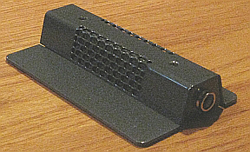
Why are many auditoriums designed with loudspeakers over or near the stage? The placement helps listeners localize sound to the stage and also tends to provide more uniform coverage of the audience. Usually these systems are designed for close-miked performances in which feedback is not a serious concern.
However, distant miking with floor/hanging mics may require a different loudspeaker placement. According to the PAG-NAG equations, gain before feedback can be increased by placing them closer to the audience and farther behind the mics.
So a venue’s existing loudspeaker placement may work fine, but it may be prudent to buy/rent at least two portable loudspeakers that can more easily be placed out of the prime feedback zone while also aimed to fully cover the audience. An approach that’s usually successful is to locate the loudspeakers near the side walls up front, in line with the third row and aim them diagonally across the audience.
As a side benefit, the direct-to-reverb ratio of the output of the loudspeakers increases the closer they are to the listeners. This bolsters volume and improves intelligibility by reducing the perceived reverberation that can smear syllables. Of course, this approach is a compromise aimed at getting the most loudness and highest direct-to-reverb ratio for the audience at the expense of other factors. But sometimes the most important goal is just to hear and understand the words of the actors.
Additional Guidelines
Every time the number of open mics doubles, gain before feedback drops 3 dB. So it helps to ride the console/mixer’s faders to follow the action on stage. Ideally only one mic is turned up at a time. Consider a “prompter” sitting next to the engineer who can read the script marked with cues so that the right mic is unmuted at the right time.
If sibilance (“s” sounds) can’t be heard clearly, boost the high-frequency EQ a little at 10 kHz, but watch out for feedback. A slight boost around 5 kHz can add presence and make the voices sound a little louder and closer. Use compression with extreme caution – it may tamp down much-needed extra volume.
A 1/3-octave graphic equalizer or parametric equalizer between the console and amplifiers, or plugged into the mic group insert jacks can be an invaluable tool. Turn down frequencies that feed back just to the point where ringing stops. Automatic feedback suppressors can also be deployed with acceptable results.
Don’t feed actors’ voices into stage monitors. They can be used to provide musical cues, just keep them as far from (and behind) the mics as possible.
The next time you’re faced with the challenge of capturing actors working on stage, particularly if your client doesn’t want the added complication and expense of headworn mics, consider the floor-based approach. It can work surprisingly well.
